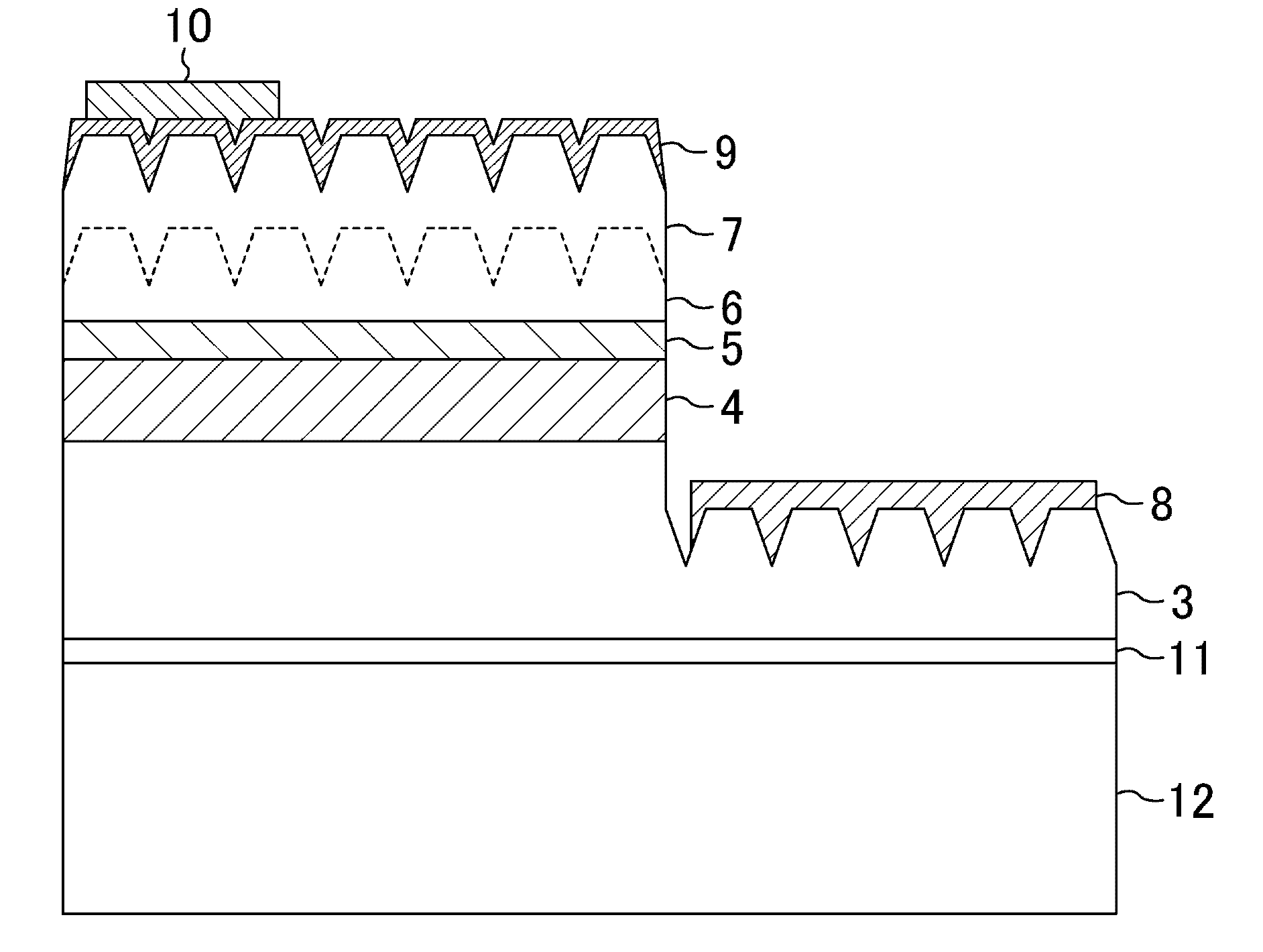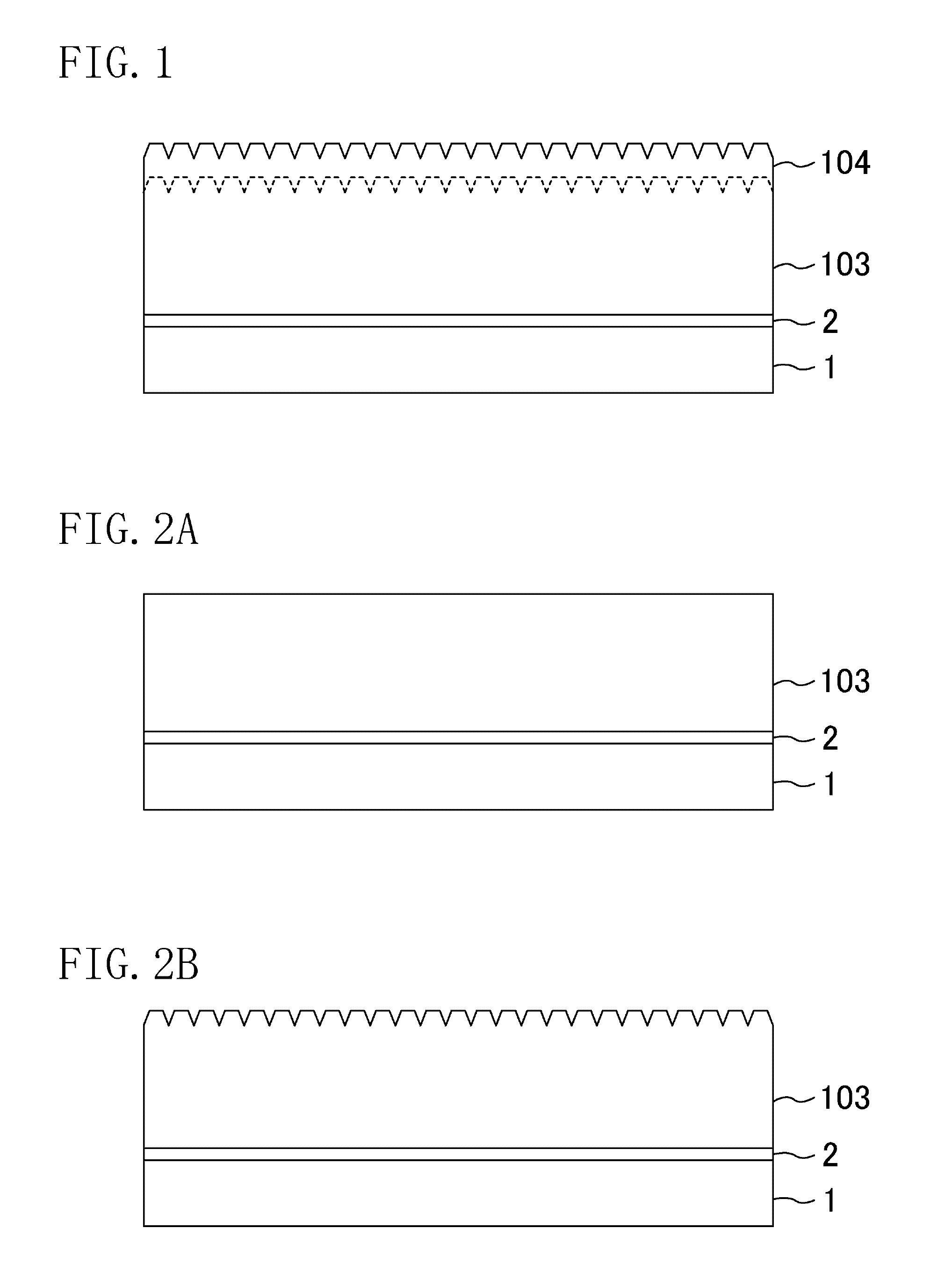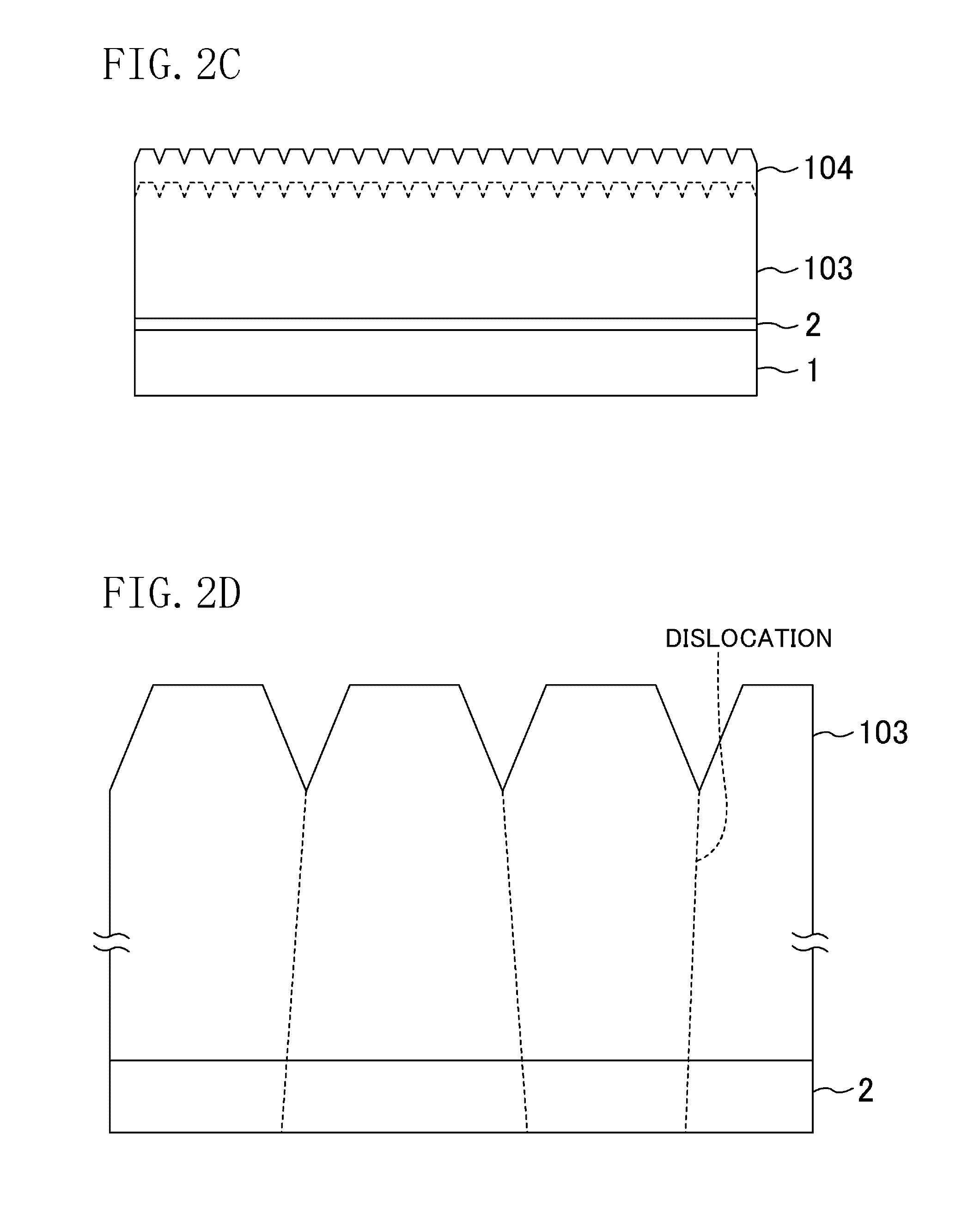Nitride semiconductor device and manufacturing method of the device
- Summary
- Abstract
- Description
- Claims
- Application Information
AI Technical Summary
Benefits of technology
Problems solved by technology
Method used
Image
Examples
first exemplary embodiment
Manufacturing Method of First Exemplary Embodiment
[0069]A manufacturing method of the LED of FIG. 1 will be described below. FIGS. 2A-2E illustrate the manufacturing method of the LED according to the first exemplary embodiment of the present disclosure.
[0070]A vapor deposition system such as metal-organic chemical vapor deposition (MOCVD), thermal CVD, halide vapor phase epitaxy (HDVPE), molecular beam epitaxy (MBE), or metal-organic molecular beam epitaxy (MOMBE) is used for crystal growth of the nitride semiconductor.
[0071]First, as shown in FIG. 2A, the buffer layer 2 made of AlN and the first nitride semiconductor layer 103 made of undoped GaN are formed in this order on the Si substrate 1 having the (111) plane as a principle surface, using the C-plane (0001) as a principle surface.
[0072]Next, as shown in FIG. 2B, unevenness is formed on the surface of the first nitride semiconductor layer 103. The unevenness is formed by, for example, crystal growth shown in FIG. 2D. Pit grow...
second exemplary embodiment
Second Variation of Second Exemplary Embodiment
[0101]A second variation of the second exemplary embodiment of the present disclosure will be described below. While the LED shown in FIG. 3 has a so-called horizontal structure, the structure is not limited thereto and may be of a vertical type. FIG. 7 is a cross-sectional view of a vertical LED according to the second variation of the second exemplary embodiment. The same reference characters as those shown in the second exemplary embodiment are used to represent equivalent elements, and the explanation thereof will be omitted.
[0102]Differences from the second exemplary embodiment are as follows. In the second exemplary embodiment, parts of the second p-type nitride semiconductor layer 7, the first p-type nitride semiconductor layer 6, the OFS layer 5, and the light-emitting layer 4 are removed, and the negative electrode 8 is formed on the exposed surface of the n-type nitride semiconductor layer 3. On the other hand, the Si substrat...
third exemplary embodiment
[0104]A third exemplary embodiment will be described. While the LED has been described in the second exemplary embodiment, the p-type nitride semiconductor layer of the present disclosure is applicable to a laser diode (hereinafter referred to as an “LD”). FIG. 8 is a cross-sectional view of a laser diode according to the third exemplary embodiment of the present disclosure.
[0105]In the nitride semiconductor light-emitting device of the third exemplary embodiment, an n-type nitride semiconductor layer 203 made of n-type AlaGa1-aN, where 0204, an OFS layer 205 made of p-type AlGaN, the first p-type nitride semiconductor layer 6 made of p-type AlaGa1-aN, where 07 made of p-type AlaGa1-aN, where 0201 made of n-type and GaN having a (0001) plane as a principle surface, using the C-plane (0001) as a principle surface. In addition, a positive electrode 209 is formed on the second p-type nitride semiconductor layer 7, and a negative electrode 208 is formed on the back of the substrate 1, t...
PUM
 Login to View More
Login to View More Abstract
Description
Claims
Application Information
 Login to View More
Login to View More - R&D
- Intellectual Property
- Life Sciences
- Materials
- Tech Scout
- Unparalleled Data Quality
- Higher Quality Content
- 60% Fewer Hallucinations
Browse by: Latest US Patents, China's latest patents, Technical Efficacy Thesaurus, Application Domain, Technology Topic, Popular Technical Reports.
© 2025 PatSnap. All rights reserved.Legal|Privacy policy|Modern Slavery Act Transparency Statement|Sitemap|About US| Contact US: help@patsnap.com



